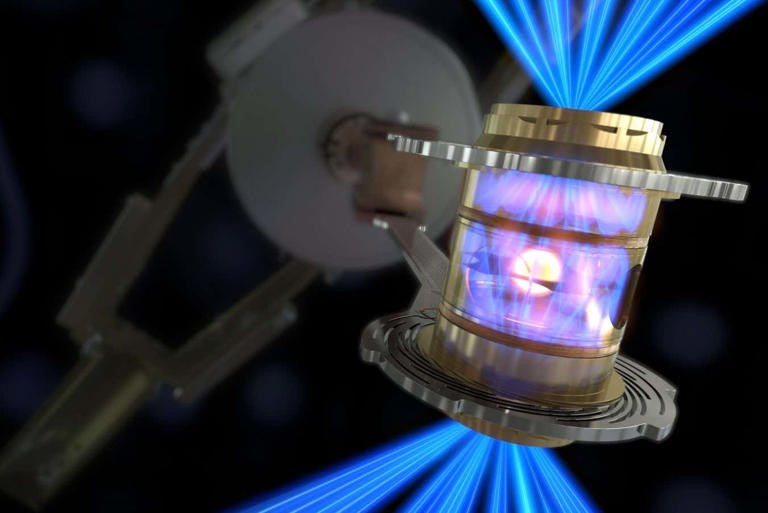Breakthrough In Nuclear Fusion: Is Low-Cost, Sustainable Energy
Recent fusion experiment achieves second-ever net gain in energy, showing improvement over the initial success. However, significant caveats remain before heralding an era of unlimited clean energy.

Figure 1. Breakthrough In Nuclear Fusion: Is Low-Cost, Sustainable Energy
Figure 1 shows Fusion power offers advantages over fission-based nuclear plants. Unlike fission, which involves splitting atoms, fusion combines particles to release energy, mimicking the sun's process. Fusion yields more energy, produces no radioactive waste, yet taming and managing the reaction remains a substantial challenge for scientists and engineers.[1]
What has occurred, and what has set the fire?
In December 2022, Lawrence Livermore National Laboratory (LLNL) achieved a significant breakthrough in fusion research, generating more energy from a fusion reaction than was input. Using lasers in the National Ignition Facility (NIF), they produced a plasma from hydrogen isotopes, deuterium and tritium, resulting in around 20% more energy output (2.5 megajoules) compared to input (2.1 megajoules). This marked progress towards viable fusion reactors.
Recently, LLNL reportedly achieved a second ignition, where the fusion reaction output surpassed input even further, reaching approximately 3.5 megajoules. This event, occurring on July 30th, signifies a continued advancement in fusion research. While official confirmation is pending, LLNL intends to share results through scientific conferences and peer-reviewed publications.
Does this indicate a solution for fusion power?
The recent progress in fusion power doesn't mean the technology has been completely solved. There are several challenges that need to be addressed before fusion can become a reliable and practical energy source. First, while the achieved energy output from fusion reactions is promising, the lasers used in the process are currently inefficient. The energy input required to operate these lasers is much higher than the energy output from fusion. This poses a significant hurdle, as achieving a true breakthrough would involve creating a fusion reaction that not only surpasses input energy but also accounts for the total energy requirements, including laser inefficiencies.
Second, the current fusion reactors, like the NIF reactor, have limitations in terms of operation. They can only be fired once for a brief duration before requiring extended cooling periods. In contrast, a commercial fusion reactor would need to operate continuously, with multiple ignitions per second. Overcoming this limitation is essential for practical energy production. Moreover, even if a reactor manages to run continuously and covers its energy input, it would still need to exceed a break-even point. This means generating a substantial net energy surplus that justifies the considerable costs associated with building and maintaining fusion reactors.
While the recent advancements are promising steps towards fusion power, significant challenges remain. These include improving laser efficiency, achieving continuous operation, and attaining a substantial net energy gain that makes fusion a competitive and viable alternative to existing energy sources.
Will the problem of fusion ever be resolved?
While the future of fusion remains uncertain due to potential challenges, there are more reasons for optimism than ever before. The achievement of the ignition milestone demonstrates the validity of the science behind fusion, shifting the focus to engineering hurdles. Two primary research approaches, using magnetic fields or lasers, are being pursued to achieve viable fusion. The National Ignition Facility (NIF) employs the laser-based inertial confinement fusion (ICF) method, wherein lasers heat and expand a hydrogen fuel capsule. Numerous startups are exploring unconventional designs, adding to the pool of knowledge on fusion approaches.
However, it's important to note that a functional fusion reactor is likely years away from realization, making it inadequate to solely rely on fusion to address the climate crisis.[2] While successful fusion reactors would be a remarkable achievement from decades of coordinated research, clean and abundant energy must still come from renewable sources in the near and medium term.
References:
- https://www.newscientist.com/article/2386288-nuclear-fusion-breakthrough-is-cheap-clean-energy-finally-here/
- https://www.msn.com/en-us/money/markets/nuclear-fusion-breakthrough-is-cheap-clean-energy-finally-here/ar-AA1eTFu5
Cite this article:
Janani R (2023) Breakthrough in Nuclear Fusion: Is Low-Cost, Sustainable Energy, ,Anatechmaz, pp.476

